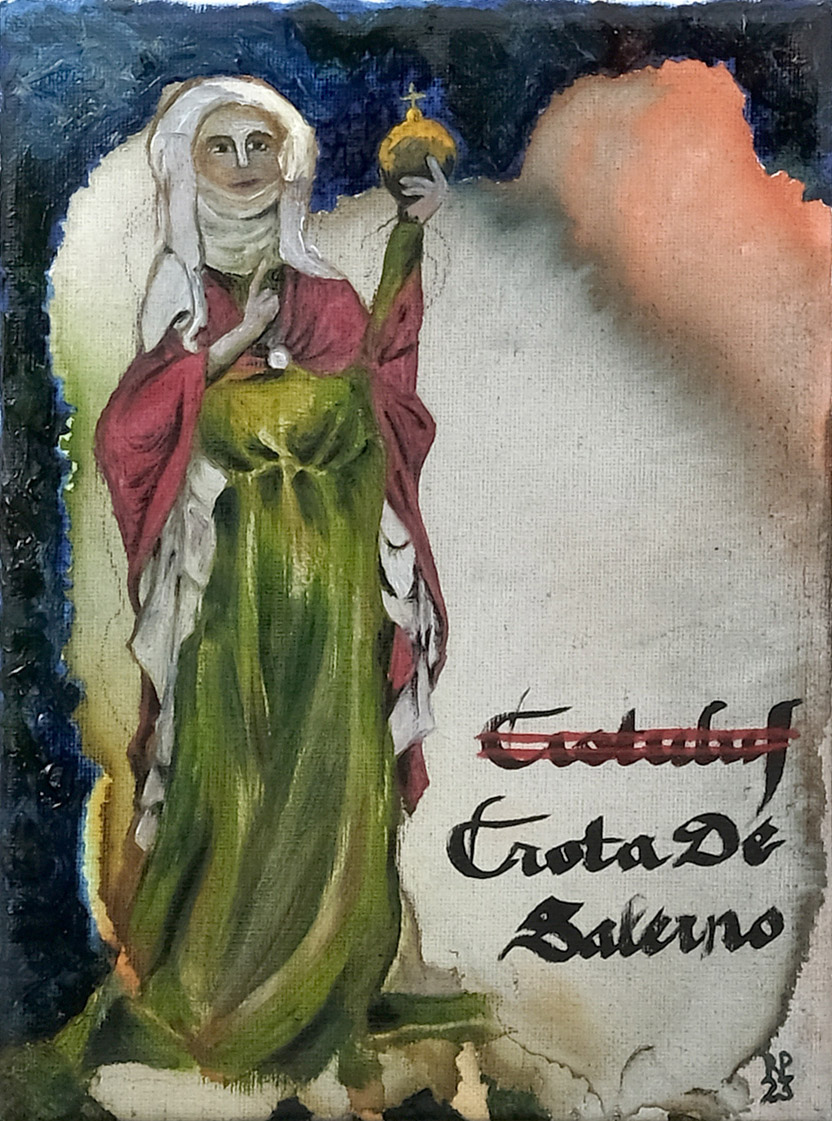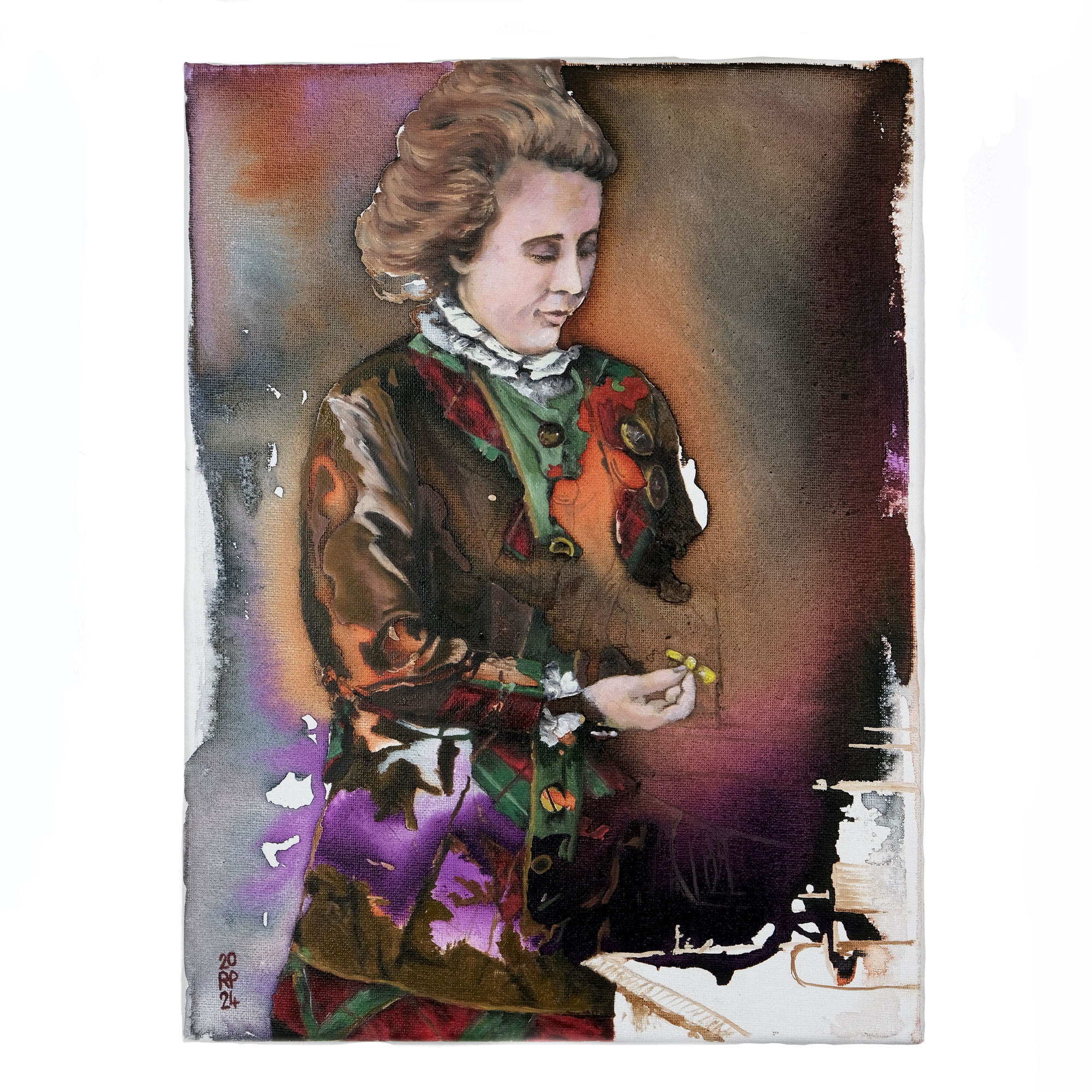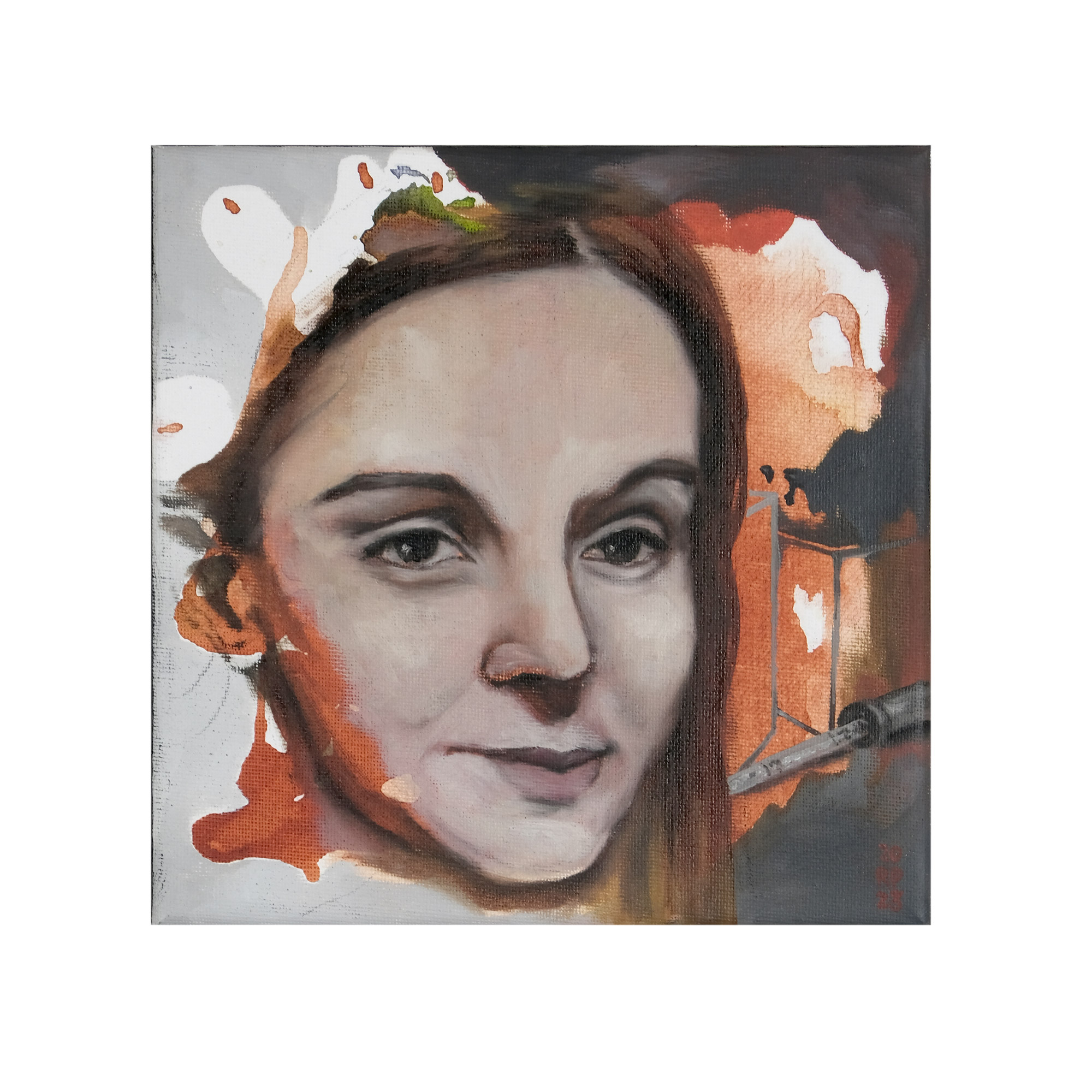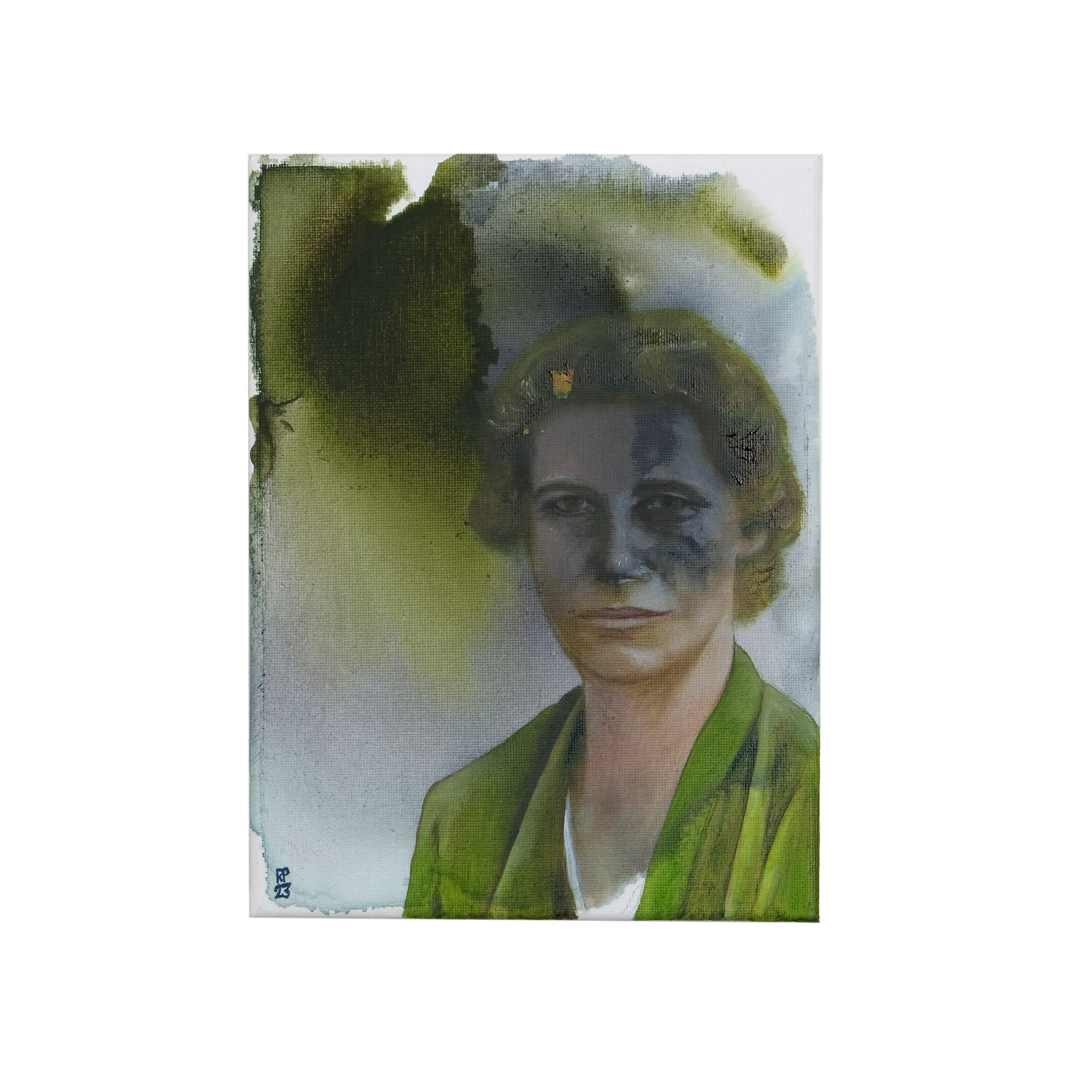Neither man nor midwife (Trota de Salerno)
Availability & Price
Trota de Salerno (~1090-1160) was a physician and gynecologist from Salerno (Italy), where a large community practiced medicine in the 11th century. Trota de Salerno summarized the knowledge about the female body and the treatment of female ailments in a large collection of writings, later known as the "Trotula". This book was the standard work on gynecology for centuries and was distributed throughout Europe. A monk once changed her name to "Trotulus", as he probably thought a female name was a mistake. Later, in the 19th century, a historian wanted to know Trota not as a doctor but as a midwife. The fact that women and their abilities were considered untrustworthy and that they "should actually be men" is not uncommon in historiography, which has been dominated by men right up to the present day.
The painting technique of this work
The basis is a white canvas, which was colored with ink in a random process. In the next step, the artist paints the portrait on these colored areas. The idea behind this type of representation is the fact that women and their contributions are not seen clearly and unambiguously. The portrait series aims to make women and their achievements - like Inge Lehmann - more visible and thus better known.
About the portrait
This portrait is based on the image of Trota de Salerno in a manuscript from the 12th century.It is therefore not a portrait in the usual sense - there are no sources about Trota's appearance. The word "Trotulus" is crossed out on the picture, below which is written: Trota de Salerno - in a medieval calligraphy.
Who was Trota de Salerno?
Trota de Salerno (also known as Trocta) was a doctor and medical writer in the southern Italian coastal town of Salerno who lived in the first or middle decades of the 12th century. She propagated cleanliness, a balanced diet, exercise and the avoidance of stress - a very modern combination. Her book "De curis mulierum" on women's illnesses was very progressive for the time.Her fame spread as far as France and England in the 12th and 13th centuries.After that, apart from a distorted image of her work that survived in the Trotula treatises, her work fell into oblivion until it was rediscovered in the late 20th century.
How did Trota come to write down these texts?
The literacy of women in southern Italy at this time is not well documented, which raises the question of why the "De curis mulierum" was written down at all.One scholar, Dr. Monica Green (Professor of Modern Early History, Arizona State University), now suspects that "De curis mulierum" may not have been written down for the benefit of women in Salerno, but for an audience in England who wanted general information about medical practices in distant Salerno. Both England and southern Italy were under Norman rule at this time, and the transfer of southern Italian medical writings to Normandy and especially to England is well documented for this period. The manuscript in which we find the earliest copy of the original version of De curis mulierum (from the early 13th century) appears to have been written in both Italy and England.
| Technique & Materials: | Oil and ink on canvas |
|---|
Login





